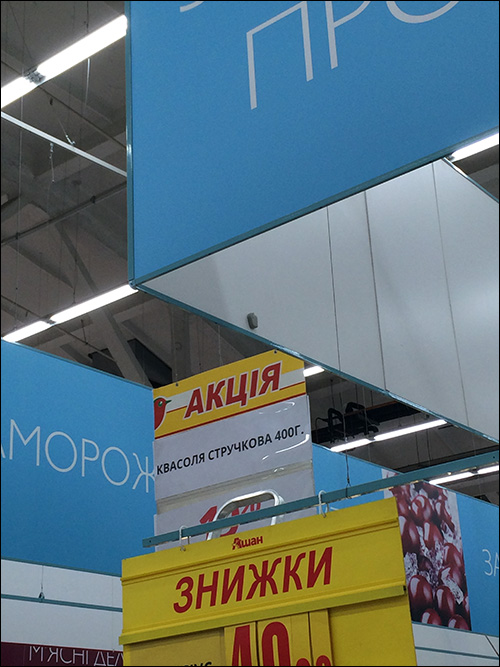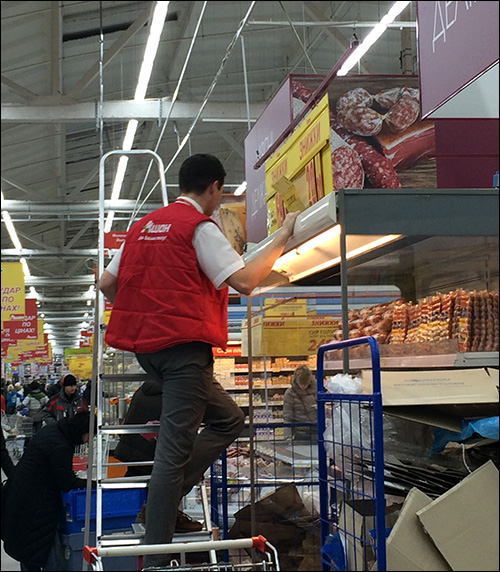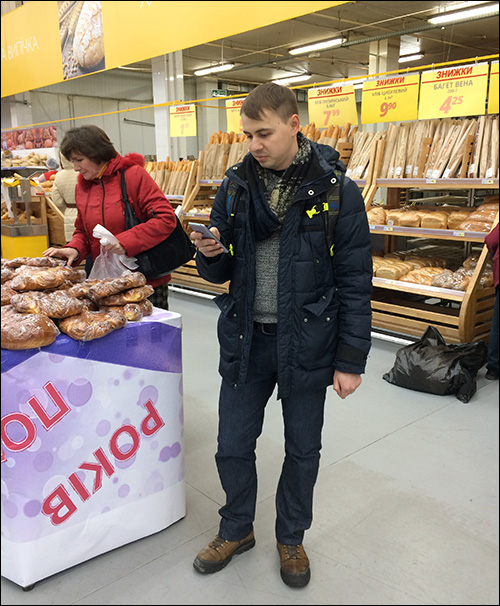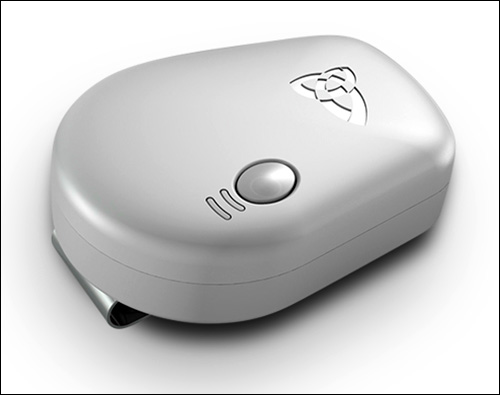Since September 2016, Ukrainian retail hypermarket Auchan has been piloting Bluetooth Low Energy (BLE) beacon technology at its Kiev [Kyiv] store to better interact with customers based on their location within the store. The solution, provided by Internet of Things technology company Leantegra, enables customers to receive notifications for wayfinding, as well as promotions as they move through the store.
Auchan’s Kiev store spans approximately 31,000 square meters (333,680 square feet), so capturing the attention of shoppers and directing them to specific products of interest poses an inherent challenge. With the Leantegra solution, the retailer hopes to make the shopping experience more personal for consumers, while also gaining a better understanding of shopper behavior. Based on the success of the Kiev store pilot, the retailer may opt to expand the deployment permanently to that store, as well as to other locations throughout Ukraine.

Auchan has mounted 180 Leantegra WiBeat BLE beacons throughout the store, says Olga Rusnak, Leantegra’s senior marketing manager. The retailer then provides customers with its own Android-based app—a store-branded application that was developed by Leantegra and works on Leantegra’s software developers kit (SDK).
Customers first download the app on a smartphone. Auchan is offering the system only on Android-based devices, though Leantegra’s SDK accommodates both Android and iOS systems. If a user has the phone’s Bluetooth enabled, the app will detect that person’s presence when he or she enters the store. The app recognizes the customer’s identity and location, then forwards relevant content to that individual’s phone. For instance, the customer may view a list of discounted items, or offers indicating new products or promotions under way throughout the store.
If interested in a promotion, a shopper can click on the “View on the map” prompt, which will display a map on the mobile phone’s screen, indicating the locations of that individual and the product of interest, for wayfinding purposes. While walking through the store, the shopper may receive push notifications about products within his or her vicinity, or view an “offers list” showcasing all specials throughout the store, not just in that person’s immediate area.
The store’s battery-powered WiBeat BLE beacons are mounted at each end of every aisle, so that the technology can better understand when a customer enters and leaves a given aisle. In that way, the system provides analytics data as well. For instance, the store can view how long an individual spends in each aisle, pair that information with the promotions or products on sale at that spot, and gain an understanding of how much interest they are generating among customers. The store can then compare that information against sales data, enabling it to further understand not only whether or not customers are interested in particular products, but also whether that interest leads to sales.
The primary benefit for the store, Rusnak says, is expected to be customer loyalty. The app ensures that shoppers are aware of sales, discounts and happenings within the store during their visit, which the company hopes will lead not only to more sales but also to greater interest in returning for future events and sales.
Thanks to user-defined customer analytics, Rusnak reports, the store hopes to analyze how well proximity marketing boosts sales, as well as how well existing marketing strategies are working. For instance, he says, if the company determines, based on the collected beacon transmission data, that a promotion has failed to generate much foot traffic around a specific product at the store, it can re-evaluate that promotion.
The WiBeat BLE beacon provides up to a 100-meter (328-foot) read range and supports iBeacon, Eddystone and hybrid (iBeacon and Eddystone) modes. The beacon can also serve as a real-time location system (RTLS) tag for real-time tracking of the item to which it is attached.

Later this spring, Auchan intends to evaluate the deployment’s results based on how customers use the technology, as well as whether particular sales or promotions lead to greater sales. “Our team would like to gain insight into a business value our technology can leverage in retail,” Rusnak says. “In other words, our aim is to see boost of sales, an increase in a client wallet share and a deeper customer engagement.”



